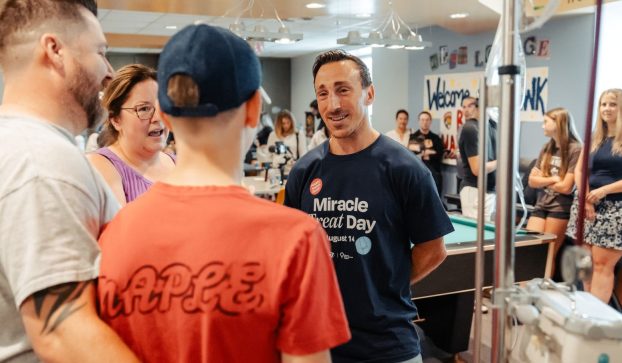Despite a weak U.S. economy – and the failure of many who have gone before them – two Canadian agencies have recently dared to expand south of the border.
Interestingly, they vary dramatically in terms of size and business models: Toronto-based Gee Jeffery & Partners, a relatively small shop, has a new office in San Francisco, and Montreal’s Cossette Communication Group, an agency network with locations across Canada, has been snapping up agencies in New York.
So what makes these ad execs think they’ll make it in a market where others have failed, and more importantly, is there a secret formula for success south of the border?
In the past, Canadian shops have used various strategies to break into the larger U.S. market. Models such as winning U.S. business to be handled out of Canada or simply opening a small service office have only been marginally successful. Even those with offices on the ground in the U.S. have suffered from the vagaries of the marketplace.
Alan Middleton, Toronto-based professor of marketing at York University’s Schulich School of Business, says Canadians have found trying to compete in the much larger, aggressively competitive U.S. marketplace – which often doesn’t take Canadians seriously – puts enormous strain on management and financial resources, often ‘crippling the mother ship back in Canada.’
That’s why, for Gee Jeffery & Partners, an important strategy has been to downplay its Canadian connection. Peter Jeffery, CEO, says there is a glass wall that Canadians run into in the U.S., but that Gee Jeffery is getting around that roadblock by positioning itself as an international agency with an international frame of mind.
‘Alan [Gee] and I are both English. [The agency] is made up of people – at least from a senior management point of view – from all over the world. We happen to be based in Toronto, a great North American city, but we position ourselves very much as being an international North American agency. We try to take the Canadian emphasis out of it.’
Gee Jeffery’s game plan has been to move where its clients are. The office in San Francisco was set up in November to be close to Covad, a large high-speed-Internet-access client with billings of US$25 million. Similarly, when it won the US$10 million Cincinnati Bell account in 2001, Gee Jeffery opened a full-service office in Cincinnati.
So far, all is well for Gee Jeffery in America: the new agencies have picked up more business thanks to referrals, and at least 40% of its 2003 revenue will come from the U.S. The next move, says Jeffery, could be Miami. The agency has two clients in the Caribbean and the agency principals believe a Florida location could help attract more Caribbean business.
Jeffery adds that an important factor is that the offices are full-service and staffed by people who know the market. In fact, clients often help in the process. ‘There is no point in going into a market, hanging out a shingle and hoping business will come. The strategy is to find a client in a market of some substance and size, land that client, and make it part of the agreement that they will encourage us and actually help us set up an office.’
Middleton agrees that hiring from within the local industry is imperative, and says this has been the key to Cossette’s successful expansion across Canada from its Montreal base.
‘[Cossette] knows how competitive the U.S. market is. They know they have to have strong management on the ground because imagine a bunch of French Canadians trying to tell a bunch of New Yorkers how to do advertising. It doesn’t work. So they look for a strong local team.
‘That was their big success when they moved from Quebec to Toronto. [They] left it to the Toronto people to work their community. They did the same in Vancouver and in the East. That’s the model they’ll follow.’
However, Cossette is approaching expansion in the U.S. a little differently than it did expansion across Canada. This time, the tactic is to export its integrated or ‘convergent’ marketing approach rather than follow a client’s business. Early last year, it acquired full-service agency Post & Partners, now Cossette Post, in New York, and last month added more disciplines to the business with the purchase of New York direct marketing firm Tarsitano Creative.
‘We really believe in providing clients complete, marketing communications solutions,’ says Dom Caruso, president of Cossette Toronto and EVP of Cossette Communication Group. ‘We believe we have a unique competency in this, and within the U.S., it can be a very strong point of entry for us.’
What Cossette doesn’t want to do, says Caruso, is become a holding company. Rather than look around the country and pick various communications specialties in different markets, the Cossette model puts all of the disciplines in one place, in the same building, as part of the same team with one national account leader bringing all of the resources together.
Caruso says, ‘We won’t expand into another market until we get New York rounded out. Then we’ll go into another market and do it again. Everything we buy is with a view to integration, not keeping it as an independent asset.’
According to Middleton, if Cossette can achieve this goal of convergence – something U.S. agencies really haven’t been able to do – and run its U.S. office like the Canadian operations, there will be real opportunity in the U.S.
But despite the optimism, at least one Canadian agency is feeling the pain of the current economic doldrums south of the border. In February, publicly traded Envoy Communications Group closed its New York agency Hampel Stefanides. Someone who has been there and back and ‘has the scars to prove it,’ Geoff Genovese, chair, president and CEO of Toronto-based Envoy, says there are just some factors that you can’t control.
In the case of Envoy, Genovese says the New York agency suffered from the same thing that many Canadian companies have experienced over the years: consolidation. This time, though, it wasn’t a U.S. company coming in and taking over but European globalization.
Within 90 days of Sept. 11, 2001, Envoy’s three largest Hampel Stefanides clients were bought and merged into European companies and then after the tragedy, like many other advertisers, the remaining clients stopped spending.
Envoy is now concentrating on growing its three remaining companies: Watt International, a 35-year-old international design and branding firm that does business in 35 countries from six offices around the world; John St., its Toronto advertising agency; and business events firm Communiqué.
‘We hung on as long as we could,’ says Genovese. ‘It’s tough out there for independent agencies that don’t have critical mass or significant market share.’
When it comes down to it, says Alan Middleton, no one really knows the magic formula for U.S. expansion. Even if an agency opens a full-service offering, staffed by those who know the market, the agency group still needs to have deep pockets. It also needs a healthy dose of patience, because instead of pitching against five others for every piece of business, they will be pitching against 50.























